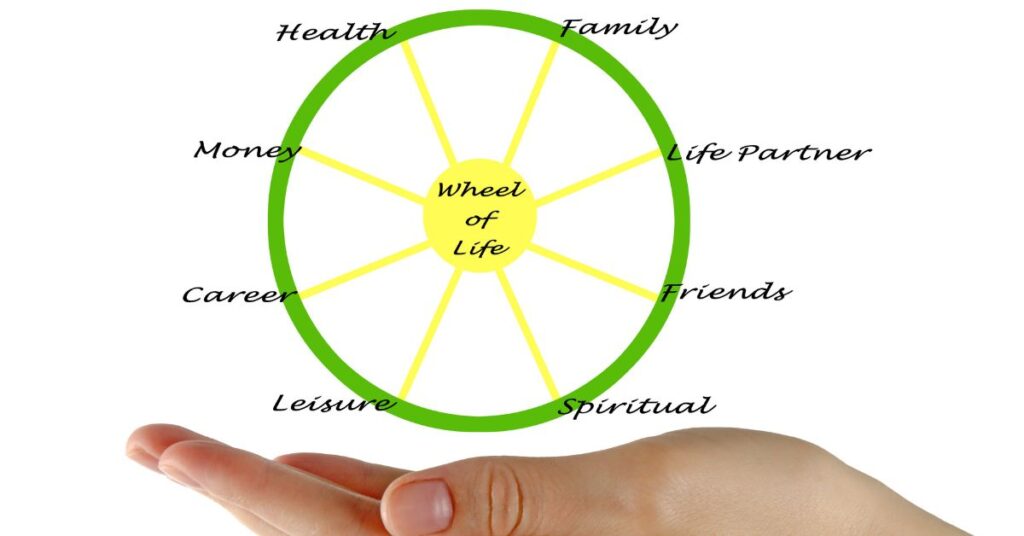Introduction: The Power of Self-Assessment Tools in Personal Development
Effective self-assessment tools serve as the foundation for meaningful personal growth, providing you with the clarity and insight necessary to understand where you are, where you want to go, and what steps will take you there. Without accurate self-knowledge gained through systematic evaluation, even the most well-intentioned personal development efforts often miss the mark or fail to create lasting change.
The most successful individuals in any field regularly use self-assessment tools to maintain awareness of their strengths, identify areas for improvement, and track their progress toward important goals. These tools transform vague feelings about your life into concrete data that you can analyze, understand, and act upon with confidence and precision.
Unlike superficial personality quizzes or one-time evaluations, the self-assessment tools presented in this guide are designed for ongoing use throughout your personal growth journey. They provide frameworks for deep self-reflection, practical templates for organizing your insights, and systematic approaches for measuring your development across multiple dimensions of life.
Whether you’re just beginning your personal development journey or looking to deepen your existing practice, these evidence-based assessment tools will help you gain the self-knowledge necessary to make informed decisions about your growth priorities and create sustainable positive change in your life.
Table of Contents
The Life Wheel Assessment: Visualizing Your Life Balance
The Life Wheel, also known as the Wheel of Life, represents one of the most powerful and widely-used self-assessment tools for gaining a comprehensive overview of your current life satisfaction across multiple important areas. This visual assessment tool helps you quickly identify which areas of your life are thriving and which need more attention and energy.

How to Complete Your Life Wheel Assessment
Step 1: Create Your Wheel Draw a large circle and divide it into eight equal sections, like slices of a pie. Label each section with one of these life areas:
•Career and Professional Development
•Financial Security and Abundance
•Health and Physical Vitality
•Relationships and Social Connections
•Personal Growth and Learning
•Recreation and Life Enjoyment
•Physical Environment and Home
•Contribution and Service to Others
Step 2: Rate Your Satisfaction For each life area, rate your current level of satisfaction on a scale from 1 to 10, where 1 represents complete dissatisfaction and 10 represents complete fulfillment. Be honest in your assessment rather than rating where you think you should be or where you hope to be in the future.
Step 3: Mark Your Scores Starting from the center of the circle (which represents 0), mark your satisfaction score for each area along the radius of that section. For example, if you rated your health as a 6, mark a point 60% of the way from the center to the outer edge of the health section.
Step 4: Connect the Dots Draw lines connecting all your marked points to create a new shape within the circle. This shape represents your current life balance and will likely be irregular rather than a perfect circle.
Interpreting Your Life Wheel Results
Identifying Priority Areas Sections with scores below 6 typically indicate areas that need immediate attention and energy. These low-scoring areas often create stress, dissatisfaction, or feelings of being stuck in other areas of your life.
Recognizing Strengths Areas scoring 7 or above represent current strengths that you can leverage to support growth in other areas. Consider how the skills, habits, or approaches that created success in these areas might be applied elsewhere.
Understanding Interconnections Notice how different areas of your life wheel influence each other. For example, low scores in health often correlate with challenges in career performance, while strong relationships frequently support higher satisfaction in multiple other areas.
Values Clarification Exercise: Discovering Your Core Motivators
Understanding your core values provides essential guidance for making decisions, setting goals, and creating a life that feels authentic and meaningful. This comprehensive values clarification exercise helps you identify what truly matters to you beneath the surface of social expectations and external pressures.
The Peak Experiences Method
Step 1: Identify Peak Experiences Think of 5-7 times in your life when you felt most alive, fulfilled, and authentically yourself. These peak experiences might include achievements, relationships, creative projects, service activities, or moments of personal breakthrough. Write a brief description of each experience.
Step 2: Analyze the Values Present For each peak experience, identify what values were being honored or expressed. Ask yourself:
•What was important to me in this situation?
•What principles or ideals were being fulfilled?
•What aspects of this experience made it so meaningful?
•What would have been missing if this experience hadn’t happened?
Step 3: Look for Patterns Review your analysis and look for values that appear repeatedly across multiple peak experiences. These recurring themes often represent your core values—the fundamental principles that drive your sense of meaning and satisfaction.

The Values Ranking Process
Step 1: Create Your Values List From your peak experiences analysis and reflection on what matters most to you, create a list of 10-15 values that resonate strongly. Common core values include: authenticity, creativity, connection, growth, service, freedom, security, adventure, excellence, and compassion.
Step 2: Prioritize Through Comparison Use the forced ranking method to identify your top 5 core values. Compare each value against every other value, asking “If I could only honor one of these two values, which would I choose?” Keep track of how many times each value “wins” these comparisons.
Step 3: Test Your Rankings Imagine scenarios where your top values might conflict with each other. How would you prioritize them? This testing process helps ensure your values ranking reflects your authentic priorities rather than what you think should be important.
Values Alignment Assessment
Once you’ve identified your core values, assess how well your current life aligns with these priorities:
Daily Life Alignment For each core value, rate from 1-10 how well your daily activities, choices, and commitments honor this value. Low alignment scores indicate areas where changes might significantly improve your life satisfaction.
Decision-Making Filter Use your core values as a filter for future decisions. When facing choices about career moves, relationships, or major life changes, ask how each option would support or conflict with your core values.
Strengths and Growth Areas Inventory
Developing accurate awareness of your natural strengths and areas for growth provides crucial information for designing effective personal development strategies and making career and life decisions that leverage your unique capabilities.
Comprehensive Strengths Assessment
Natural Talents and Abilities Identify activities that come easily to you, that you learn quickly, or that others frequently ask for your help with. These natural talents often point toward core strengths that can be developed into significant advantages.
Acquired Skills and Competencies List skills you’ve developed through education, training, or experience. Consider both technical skills (like software proficiency or analytical abilities) and soft skills (like communication or leadership capabilities).
Character Strengths and Virtues Reflect on your character strengths using the framework developed by psychologists Christopher Peterson and Martin Seligman at the University of Pennsylvania. Their research identified 24 character strengths organized into six virtues: wisdom, courage, humanity, justice, temperance, and transcendence.
Energy-Giving Activities Notice which activities energize you versus those that drain your energy. Activities that align with your strengths typically feel energizing even when they’re challenging, while working against your natural grain often feels exhausting.

Growth Areas Identification
Skill Gaps Analysis Identify skills or competencies that would significantly enhance your effectiveness in areas important to you. Focus on growth areas that align with your goals and values rather than trying to fix every perceived weakness.
Feedback Integration Gather feedback from trusted friends, family members, colleagues, or mentors about areas where they see potential for your growth. Sometimes others can see our blind spots or untapped potential more clearly than we can.
Challenge Pattern Recognition Notice recurring challenges or obstacles in your life. These patterns often point toward growth areas that, if developed, would create significant positive changes across multiple life areas.
Progress Tracking and Measurement Systems
Effective self-assessment requires ongoing measurement of your development across both quantitative metrics and qualitative changes that may be harder to measure but equally important for your overall growth and satisfaction.
Quantitative Progress Indicators
Habit Consistency Tracking Track your consistency with key habits and practices that support your growth goals. This might include meditation minutes, exercise sessions, books read, or other measurable activities related to your development priorities.
Goal Achievement Metrics Establish specific, measurable indicators for your major growth goals. Rather than vague aspirations like “improve relationships,” create measurable targets like “have one meaningful conversation per week with family members” or “express appreciation to someone daily.”
Life Satisfaction Scores Regularly re-assess your Life Wheel scores to track changes in your satisfaction across different life areas. Monthly or quarterly assessments help you notice trends and adjust your focus as needed.
Qualitative Progress Assessment
Self-Reflection Questions Develop a set of reflection questions that help you assess qualitative changes in your inner experience, relationships, and overall life satisfaction. Examples include:
•How has my response to stress or conflict changed?
•What new insights about myself have I gained?
•How have my relationships deepened or improved?
•What evidence do I see of increased self-awareness or emotional maturity?
Story and Narrative Changes Notice changes in how you tell your story or describe your life circumstances. Growth often shows up as shifts from victim narratives to empowerment stories, from scarcity thinking to abundance mindset, or from fear-based to love-based perspectives.
Feedback from Others Regularly ask trusted people in your life if they notice changes in how you show up in relationships, handle challenges, or express yourself. External feedback can reveal growth that you might not notice yourself.

Creating Your Personal Self-Assessment Tools System
Monthly Assessment Routine
First Week of Each Month:
•Complete a mini Life Wheel assessment focusing on areas you’re actively working to improve
•Review your values alignment and notice any areas where you’ve drifted from your priorities
•Assess progress on your key growth goals using both quantitative and qualitative measures
Quarterly Deep Dive:
•Complete comprehensive assessments using all the tools in this guide
•Analyze patterns and trends in your growth over the past three months
•Adjust your development focus based on what you’ve learned about yourself
•Set intentions and priorities for the upcoming quarter
Integration with Your Self-Improvement Journey
These self-assessment tools work most effectively when integrated into a comprehensive approach to personal development. For a complete roadmap that shows you how to use these assessment insights to create sustainable positive change, explore our comprehensive guide on how to start your self-improvement journey.
The assessment tools provide the foundation of self-knowledge, while a structured development plan helps you translate that knowledge into consistent action and meaningful progress toward your most important goals and aspirations.
Customizing Tools for Your Needs
Adapt Categories to Your Life Modify the Life Wheel categories to reflect your unique circumstances and priorities. For example, students might include “Academic Performance” while parents might add “Family Relationships” as a separate category from general relationships.
Develop Personal Metrics Create measurement systems that reflect your specific goals and values. If creativity is important to you, track creative projects completed or time spent in creative activities. If service matters, measure volunteer hours or acts of kindness.
Regular Tool Evaluation Periodically assess whether your self-assessment tools are providing valuable insights and supporting your growth. Modify or replace tools that no longer serve your development needs.
Transforming Self-Knowledge into Personal Growth
Self-assessment tools provide the foundation for meaningful personal development by giving you accurate, actionable information about your current state, your progress, and your priorities for continued growth. However, assessment without action remains merely interesting information rather than transformative insight.
The true power of these tools emerges when you use the self-knowledge they provide to make informed decisions about where to focus your energy, what habits to develop, and how to align your daily choices with your deepest values and aspirations. Regular use of these assessment frameworks creates a feedback loop that accelerates your growth and helps you stay on track toward your most important goals.
Remember that self-assessment is an ongoing process rather than a one-time activity. Your priorities, circumstances, and growth areas will evolve as you develop, requiring regular reassessment and adjustment of your development focus. Embrace this evolution as a sign of growth rather than inconsistency.
As you implement these self-assessment tools, be patient with the process and compassionate with yourself about what you discover. The goal is not to judge yourself harshly for areas that need improvement, but to gain the clarity necessary to create positive change with intention and wisdom.
Your commitment to honest self-assessment demonstrates courage and wisdom that will serve not only your own development but also your ability to support others in their growth journeys. The self-knowledge you gain through these tools becomes a gift that enhances every area of your life and every relationship you touch.
Enjoyed this content? Read more on our website.
References
Peterson, Christopher, and Martin E. P. Seligman. “Character Strengths and Virtues: A Handbook and Classification.” Oxford University Press, 2004. https://www.authentichappiness.sas.upenn.edu/
Whitworth, Laura, et al. “Co-Active Coaching: Changing Business, Transforming Lives.” Nicholas Brealey Publishing, 2007.
Brown, Brené. “Daring Greatly: How the Courage to Be Vulnerable Transforms the Way We Live, Love, Parent, and Lead.” Gotham Books, 2012. https://brenebrown.com/
Dweck, Carol S. “Mindset: The New Psychology of Success.” Random House, 2006.
Sinek, Simon. “Start with Why: How Great Leaders Inspire Everyone to Take Action.” Portfolio, 2009.
